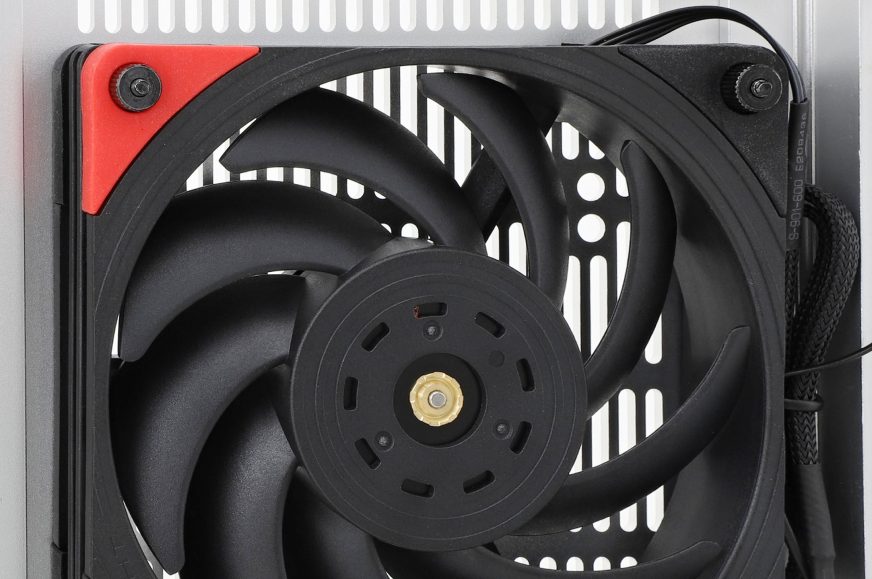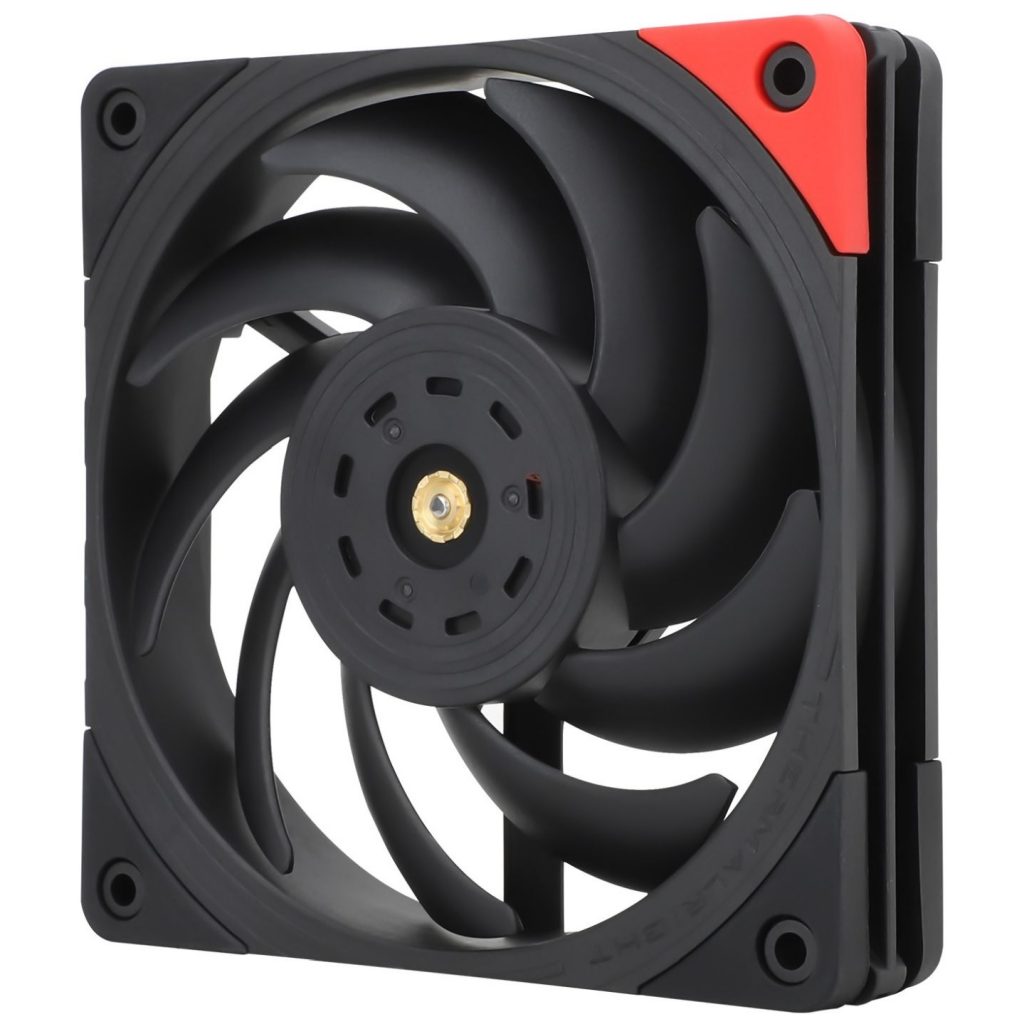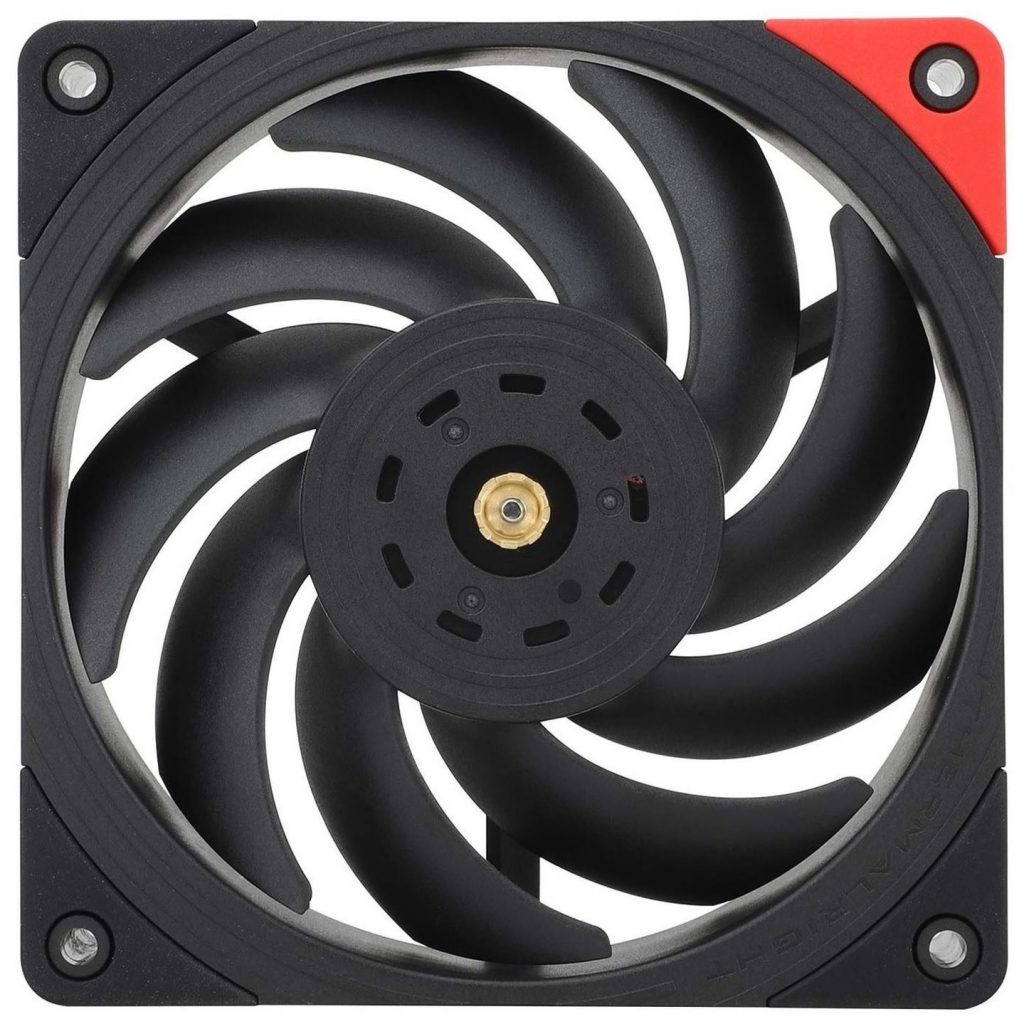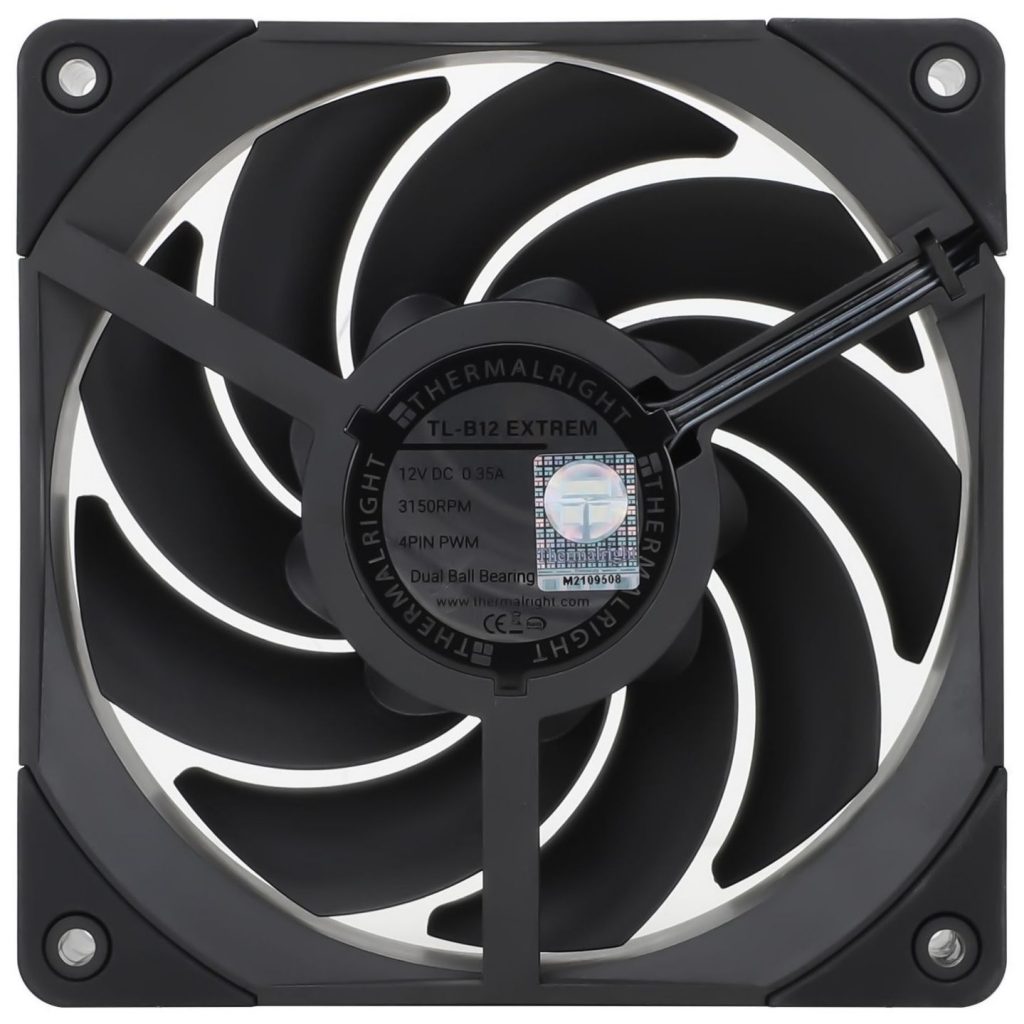Thermalright increases rpm of the TL-B12, labelled as Extrem
A remarkable fan—TL-B12 Extrem—has appeared among the products on Thermalright.com. It will be one of the few options with very high speed and therefore high static pressure and air flow. According to specifications, it even defeats the industrial variant of the Noctua NF-F12 fan (iPPC-3000 PWM) in some aspects. However, the TL-B12 Extrem could be cheaper.
Thermalright has not yet officially announced the TL-B12 Extrem, but it is already included in the offer among the latest products. The specifications, which we discuss, are already available though.
It has the most popular and traditional format—120 mm—and the assembly with mutual distances of all holes—105 mm. This is not always a matter of course at Thermalright, for example the TY-127 model has atypical rectangular hole spacing. Compared to the standard dimensions of 120-millimeter fans, the new TL-B12 Extrem differs only in its thickness. It has 25.6 mm instead of the usual 25 mm for anti-vibration pads in the corners. However, this is a negligible difference, which should not significantly complicate things in any way.
In regards to the installation, it is also worth mentioning that instead of self-tapping screws, long screws with nuts and rubber washers are supplied. These screws pass through the entire thickness of the fan and the securing is realized by the nuts. With regard to repeated installation, this is definitely a better (safer) way of mounting, as the stability does not degrade (as is the case with self-tapping screws, where the contact is looser with each subsequent installation).
The accessories also include replaceable pads that are placed in the corners of the fan to eliminate the transfer of vibrations to the cooler or case. They are pre-installed in black, but if you like more contrasting white or red, you can replace them. However, it is a little pity that you will not get any cable adapters with the fan. At least a speed-limiting one would be useful, although it is not necessary for PWM support (and the wide range of options on motherboards).
The TL-B12 Extrem is based on the TL-B12 fan (non-Extrem). The fans have some common elements, some are different. As for the accessories, the TL-B12 did not come with replaceable anti-vibration pads, but you did get a Y-splitter to connect two fans and the option of installation method. In addition to long screws with nuts, the package also included standard self-tapping screws. You now need to have your own if necessary.
Like the TL-B12, the TL-B12 Extrem has the same rotor shape with nine narrower blades with more pronounced curves. From a proportional comparison, the housing with the motor and bearings seems to be the same size, although the motor and bearings are different. It is also related to the higher speed that the TL-B12 Extrem achieves.
Even the TL-B12 can be described as a high-speed fan with 2,150 rpm, but the “extreme” variant is even 1,000 rpm faster. Therefore, there is a need for another, more powerful motor. The performance of the TL-B12 Extrem motor is twice as high. It is still 12-volt, but instead of 0.16 A it has a maximum energy consumption of up to 0.35 A. The power consumption will naturally be slightly lower, this is a label for motor performance, which is somewhat increased to be able to move the rotor after some time when the friction increases.
The bearings are also more robust (probably therefore the weight is 10 g higher than in the slower variant). Instead of fluid (S-FDB) bearings, double row bearings are used. However, Thermalright does not state the mean time between failures. At maximum speed, it can theoretically be the same, but the lifespan of the TL-B12 Extrem fan will probably be longer at lower speeds.
A comparison with the Noctua NF-F12 iPPC-3000 PWM is suitable here. Although it has the upper hand in many design respects (for example, dustproof bearing insulation or even the quality of bearings as such), Thermalright promises 2% higher air flow (190.3 m3/h). This is, of course, a negligible difference, and the main point in this comparison is that the TL-B12 Extrem should achieve a significantly lower (52.6%) static pressure, 5 mm H2O.
We do not yet know how much the Thermalright TL-B12 Extrem will cost and how much cheaper it will be compared to the Noctua NF-F12 iPPC-3000 PWM. And the question is whether it will be cheaper at all. The TL-B12 sells for up to about $ 30. Clearer information concerning the price may appear during the week in the official announcement.















